Written By Taylor Davis, Communications and Marketing
In recent years, countless agricultural and environmental non profits and businesses have begun to promote the concept of shopping and eating locally. But what does this look like in everyday life and during your weekly trips to the grocery store? In order to help demystify this powerful movement, and empower our EGC community to consume more consciously, this article will dive into some of the many health benefits of buying local produce, how it works to support and uplift small farms in your area, and the best ways to shop local on a budget.
Health Benefits
While it may seem as though you are able to obtain the same quality produce at large, chain grocery stores as at farmers markets or co-ops, several studies have demonstrated that local produce can be both more flavorful and more nutritious. According to foodrevolution.org, since locally grown produce doesn’t have to travel far before sale, it is often allowed to ripen more fully before being picked. In this process, key nutrients develop, ensuring that you receive as much benefit from the fruits and vegetables you eat on a regular basis as possible. On top of this, local produce is more often grown only when in season. Although advances in technology have made it possible for us to enjoy most fruits and vegetables year round, studies have shown that eating in season also comes with a wide array of health benefits. One study found that broccoli grown out of season had about half of the vitamin C content as broccoli harvested in Spring (Wunderlich,et. al). Similarly, fully ripened, in season blackberries were found to contain a higher amount of anthocyanin pigments, the pigments responsible for giving berries their antioxidant and immune supporting properties, than those picked prematurely and shipped long distances to supermarkets (Kaume, et al. 2012). Lastly, large agribusiness firms growing produce out of season often utilize artificial gasses and chemicals to ripen fruits and vegetables and prepare them for travel and sale. Although local farms may not have an official qualification from the FDA, small farms tend to grow their food organically by default. With a smaller portion of crop to tend to, they are able to avoid use of harmful pesticides and chemicals employed by large corporations aiming for quantity over quality. By eating in season, locally grown produce, you not only receive more beneficial nutrients, but also, more flavorful food!
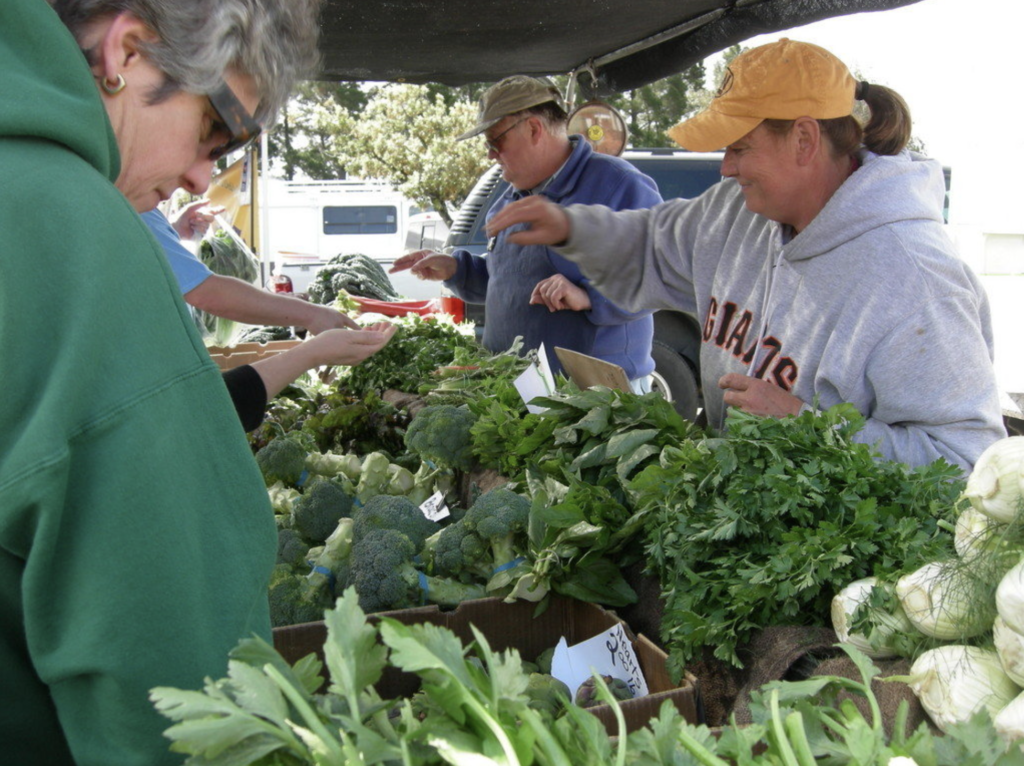
Environmental Benefits
In addition to improving your personal health, shopping locally comes with a number of environmental benefits as well. Localharvest.org notes that most produce is picked 4-7 days prior to being placed on the shelves in supermarkets, and travels an average of 1,500 miles. Being transported across the state or country at a low cost to large farms, and an extremely high cost to the environment, this practice contributes to high C02 emissions as well as leaving behind harmful chemicals that will runoff into soil and water come rainfall. Thus, eating locally, defined by most as purchasing produce grown within 100 miles of sale, is just one of many options to work toward lower carbon emissions. Furthermore, large farms focused on quick, year round production are likely to use chemicals to ripen produce after being picked and pesticides to promote out of season growth. Although these chemicals are unlikely to lead to dramatic health issues, they can be extremely harmful to the ecosystems around them, and in turn, lead to human health issues down the line (Nicolopoulou-Stamati, Polyxeni, et al, 2016). It is due to information like this that there has been a dramatic increase in the availability and promotion of organic foods since 2010, reaching an all time high in the last year. Although organic foods are often considered to be the more expensive option, more and more Americans are beginning to take stock of the potential health and environmental benefits of shopping organic given the dramatic climate and health challenges presented in 2020 (Devenyns, 2021).
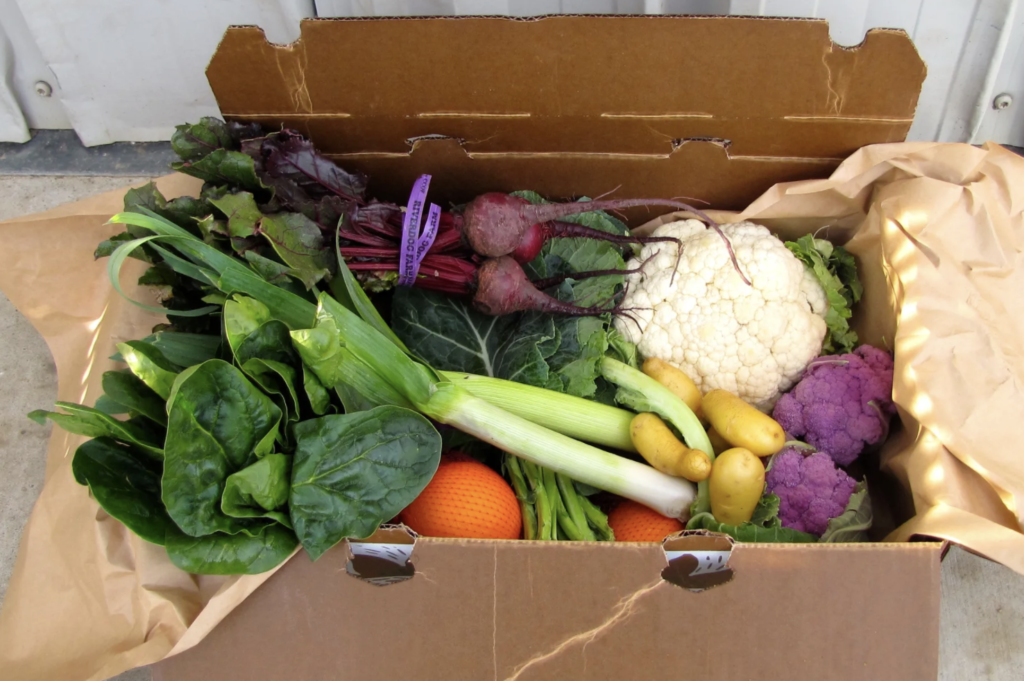
Budget Conscious Local Consumption
Given the aforementioned potential expense of shopping for local and organic produce, many are hesitant to make the switch. However, there are several ways to shop locally while remaining budget conscious. Purchasing produce through farmers markets and community supported agriculture programs are likely to be the cheapest options in terms of shopping for local, in season produce on a budget. Using tools such as localharvest.jsp’s CSA locator, it is now easier than ever to seek out direct relationships with local farmers. A CSA typically allows community members to become shareholders in a farm and commit to supporting it financially. Thus, with these consistent streams of income, farmers are able to commit to growing and providing a certain amount of produce to the community via delivered boxes or scheduled pick up events. These kinds of direct relationships and systems have been praised for offering individuals and families a consistent supply of fresh, seasonal produce, expanding one’s tastes, and supporting local growers. Finally, although food co-ops are one of the most popularly cited means for obtaining locally grown, in season produce, these can be some of the most expensive options. Owned by the people of the community through membership subscriptions, co-op markets are a great, albeit more pricey, option for those looking for the consistency and convenience of a classic grocery store on their journey to shop locally. In addition, small, locally owned grocery stores can provide products of a similar quality to those found in co-ops without the higher price. By seeking out these small businesses, you are able to simultaneously adhere to your budget while supporting local businesses (Murray, 2021).
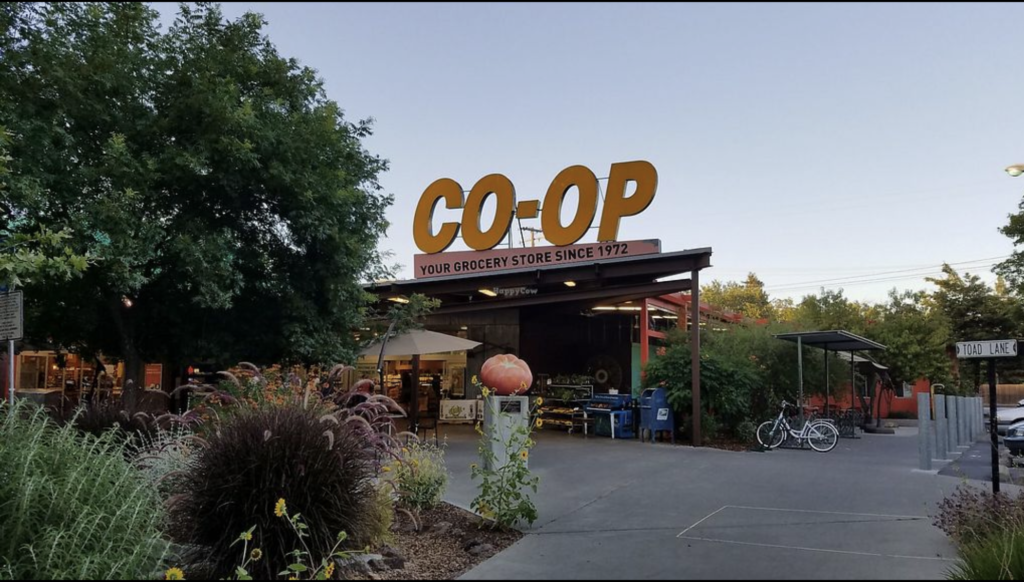
Whether you prefer to peruse your local farmers’ market each weekend, or to have your produce delivered to your door, there are plenty of healthy, local options available that work to save money, support your health and the community, and reduce the current monopolization of the agricultural business by large, government subsidized farms. Check out the resources below for more ways to shop locally.
Resources and Tips for Shopping Local and Seasonal Produce
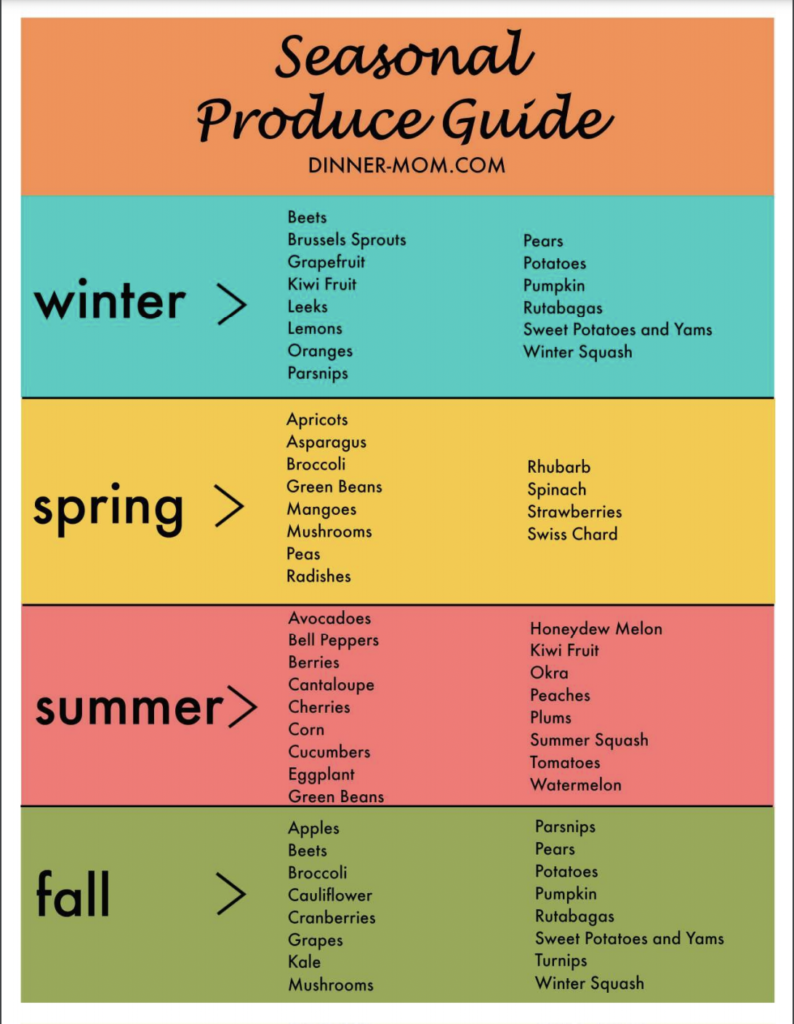
- USDA Nationwide Directory of Farmers’ Markets
- Local Harvest- Search for CSAs, Farmers’ Markets, Co-ops, Farmstands, and more in your area
- Co-op Directory
- http://www.coopdirectory.org/
- Note: This list may not be entirely comprehensive.
- Seasonal Produce Guides + Chart
- https://snaped.fns.usda.gov/seasonal-produce-guide
- https://www.seasonalfoodguide.org/
- https://www.dinner-mom.com/seasonal-produce-guide-printable-chart/
- If co-ops, CSAs and farmers’ markets are unavailable to you, seasonal produce guides such as this can be used to inform typical supermarket grocery shopping. As noted, in season produce has a number of health benefits, and may be subjected to the use of fewer chemicals. Additionally, some supermarkets include signage to let their patrons know which products come from local farms. This is a great way to get started in the world of shopping local produce while maintaining your consistent routine.
Sources
Benefits of Eating Fruit and Vegetables in Season, www.medicalwesthospital.org/seasonal-fruits-and-veggies.php#:~:text=Eating%20fresh%20fruits%20and%20vegetables,to%20lose%20their%20nutritional%20value.
Devenyns, Jessi. “Organic Produce Sales Growth Tops 14% in 2020.” Food Dive, 21 Jan. 2021, www.fooddive.com/news/organic-produce-sales-growth-tops-14-in-2020/593702/#:~:text=Sales%20of%20organic%20produce%20rose,conventional%20produce%20sales%20rose%2010.7%25.
Honeycutt, Emily. “Why Buy Local Food? It’s Healthier for You and Better for the Environment.” Food Revolution Network, 21 Dec. 2017, www.foodrevolution.org/blog/why-buy-local-food/.
Kaume, Lydia, et al. “The Blackberry Fruit: A Review on Its Composition and Chemistry, Metabolism and Bioavailability, and Health Benefits.” ACS Publications, 2012, www.pubs.acs.org/doi/abs/10.1021/jf203318p.
Murray, Christopher. “Buying Local On A Budget: Tips To Help You Support Your Community And Your Wallet.” moneyunder30.Com, 23 Dec. 2020, www.moneyunder30.com/how-to-buy-local-on-a-budget.
Nicolopoulou-Stamati, Polyxeni, et al. “Chemical Pesticides and Human Health: The Urgent Need for a New Concept in Agriculture.” Frontiers in Public Health, Frontiers Media S.A., 18 July 2016, www.ncbi.nlm.nih.gov/pmc/articles/PMC4947579/.
“What Is a CSA and 5 Reasons To Get One.” The Healthy Maven, 22 Oct. 2020, www.thehealthymaven.com/what-is-a-csa/#:~:text=%E2%80%9CCSA%E2%80%9D%20stands%20for%20%E2%80%9Ccommunity,this%20definition%20is%20quite%20broad.
“Why Buy Local?” Local Harvest, www.localharvest.org/buylocal.jsp.
Wunderlich SM, Feldman C, Kane S, Hazhin T. “Nutritional Quality of Organic, Conventional, and Seasonally Grown Broccoli Using Vitamin C as a Marker.” International Journal of Food Sciences and Nutrition, U.S. National Library of Medicine, www.pubmed.ncbi.nlm.nih.gov/17852499/.


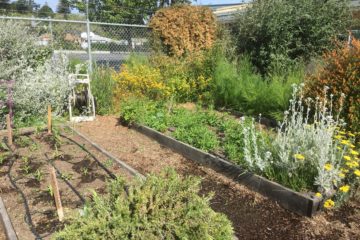
0 Comments